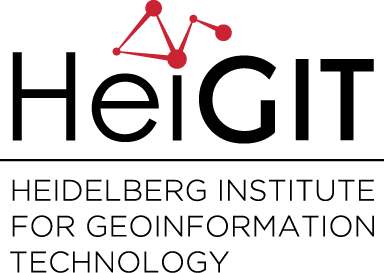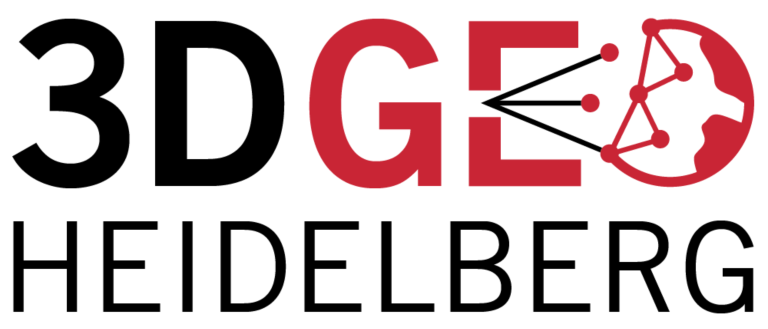Category: Research
-
German Mass Vaccination Sites in Open Healthcare Access Map
Last week we introduced Open Healthcare Access Map. Our new web application for interactively sharing results of accessibility estimates based on OpenStreetMap healthcare facilities and openrouteservice isochrones. A new update now shows motorized accessibility estimates of mass vaccination sites in Germany. Accessible via this directlink: https://apps.heigit.org/healthcare_access/#/countries/deu/covid19_vaccination/adm0 These results are based on an analysis by Sven…
-
Talk: Deep Learning for Point Cloud Processing
Lukas Winiwarter of the 3DGeo group was invited by the Austrian Society of Surveying and Geoinformation (OVG) to give a talk on the application of deep learning on point clouds, which took place on March 24. In his talk, Lukas presented four different state-of-the-art approaches to consider the irregular, unordered structure of point clouds, which…
-
Introducing the Open Healthcare Access Map
Open Healthcare Access Map is a new web application by HeiGIT to provide insights into healthcare supply on different spatial scales for many countries worldwide. The web application is available here: https://apps.heigit.org/healthcare_access/. Please note that this is a prototype and feedback on improvements and desired functionalities is very welcome. You can reach us at this…
-
New publication on the Impact of Community Happenings in OpenStreetMap
Online knowledge projects such as OpenStreetMap (OSM) and Wikipedia have gained high importance, trust and even economic value. These projects and their content are maintained and enhanced by online communities that evolve around them. Yet, these communities and their members are often ignored when the respective data or knowledge is used. In a recent publication…
-
Behind the scenes of the ohsome quality analyst (OQT)
The #ohsome quality analyst (short: OQT) has been online and accessible through its web-interface now for quite some weeks already (see the introductory blog post as a reference). The website is not the only access point to the OQT though. Therefore, the ohsome team at HeiGIT would like to give some insights to the additional…
-
Humanitarian OSM Stats: How to monitor humanitarian mapping in the HOT Tasking Manager? – Part 5: the American Red Cross
Since 2010 organized humanitarian mapping has evolved as a constant and growing element of the global OpenStreetMap (OSM) community. With more than 8,000 projects in 150 countries humanitarian mapping has become a global community effort. Due to this large amount of projects, it can be difficult to get an overview on mapping activity. This is…
-
Insights into OpenStreetMap healthcare attributes in India over time
Last November, we covered the recent increase of healthcare related objects in OpenStreetMap (OSM) in India. In less than a year, the amount of facilities has increased from 6.956 to 48.101. This is mainly due to an import run by RMSI – an Indian GIS consulting company. In this blog we will take a closer look at…
-
Flood Impact Assessment on Road Network and Healthcare Access at the example of Jakarta, Indonesia
Extreme natural events create catastrophic situations for cities and their populations. Due to climate change and anthropogenic activities, the number and intensity of these events has steadily increased at the global scale. Floods are the most common natural disaster worldwide, responsible for economic, social and life losses. Low-income countries have a death rate 23 times…
-
Humanitarian OSM Stats: How to monitor humanitarian mapping in the HOT Tasking Manager? – Part 4
Since 2010, organized humanitarian mapping has evolved as a constant and growing element of the global OpenStreetMap (OSM) community. With more than 7,000 projects in 150 countries, humanitarian mapping has become a global community effort. Due to this large amount of projects, it can be difficult to get an overview on mapping activity. This is…
-
New paper published about the OSM Sketch Map Tool
The Sketch Map Tool supports participatory mapping approaches and risk communication. An new paper presents the different functionalities of the tool. OSM data quality can be evaluated regarding the fitness for the sketch-map-approach. Based on the great idea of Field Papers, paper maps can be printed out for the use in the field, and afterwards,…
-
Open Data + Open Software – A perfect match
On 1st March 2021, the Swiss Federal Office of Topography (SwissTopo) released all official geodata according to the principles of “Open Government Data (OGD)”. With this step, Swisstopo is making large volumes of high quality geodata freely accessible. We are most excited about the 3D data, which includes digital surface models, digital terrain models and…


